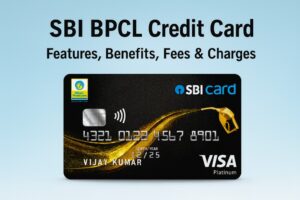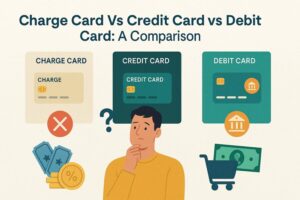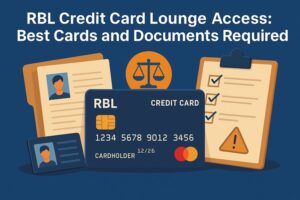Overdraft Facility Vs Credit Card: A Detailed Comparison
- 21 Oct 25
- 7 mins
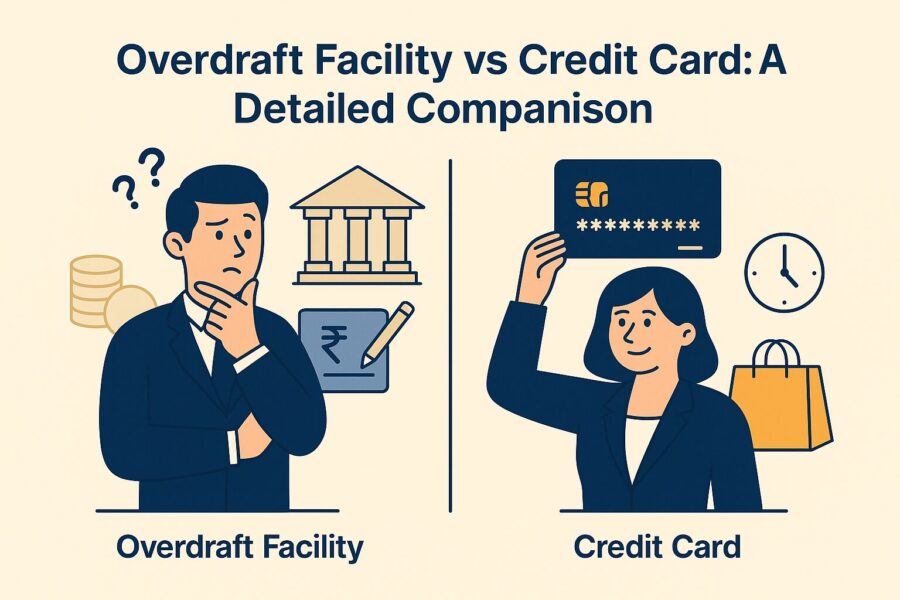
Overdraft Facility Vs Credit Card: A Detailed Comparison
- Overdraft Facility Vs Credit Card: Key Differences
- Overdraft Facility Vs Credit Card: Similarities
- How Do Overdrafts Work?
- How Do Credit Cards Work?
- Relationship Between Overdraft Facility & CIBIL Score
- Interest Rates on Overdraft Facility
- Overdraft Facility Vs Credit Card: Which is Better?
- How Can an Overdraft Facility Help Your Business?
- Conclusion
Key Takeaways
- While both provide access to short-term credit, an overdraft facility is mainly for cash flow management or emergency fund needs, whereas a credit card is used for online and retail purchases.
- Interest on an overdraft facility is typically higher and charged from the day funds are used, while credit cards levy interest only if the outstanding balance is not repaid within the billing cycle.
- An overdraft facility often requires collateral or a secured account relationship, whereas credit cards are unsecured and based primarily on your credit score and repayment history.
- In an overdraft, the available limit reduces each month, and repayment terms are flexible within a fixed tenure (up to one year). For credit cards, the limit resets every billing cycle after payment.
- Both affect your CIBIL score. Missing overdraft repayments or defaulting on credit card dues can negatively impact your credit profile. Maintaining timely payments improves creditworthiness for both.
Do you know that the minimum credit score to get a credit card is usually 750? But what if you don’t meet that criteria? In such cases, you can use an overdraft facility, provided you maintain a high security deposit and a strong financial relationship with them.
While both overdraft facilities and credit cards give you access to extra funds, they work differently. Explore the differences between overdraft facility vs credit card in this blog.
Overdraft Facility Vs Credit Card: Key Differences
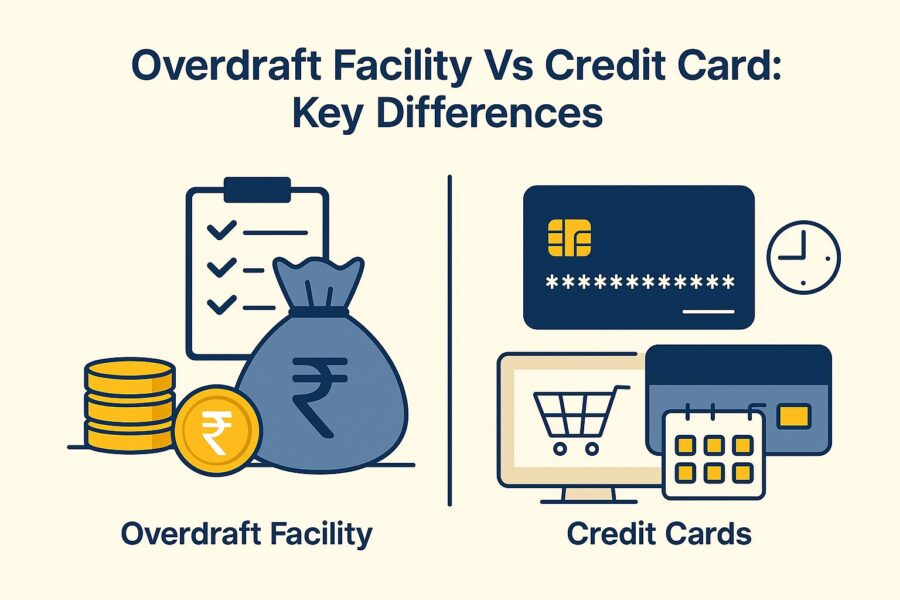
| Parameters | Overdraft | Credit Cards |
| Purpose | Can be used for multiple purposes | Can be used for online and offline purchases |
| Interest Rates | Higher interest rates than credit cards | Lower interest rates than overdraft |
| Security | Based on credit history, banking relationship and investments | No collateral needed, unsecured loans |
| Limits | The limit decreases every month | Credit card limit resets after each bill payment |
| Loan Amount | Determined based on security deposits | Determined based on credit score and borrowing history |
| Tenure | Usually 1 month to 1 year | A bill is generated every month for the outstanding balance |
| Account | Access through an existing account | Access through existing and new accounts |
Overdraft Facility Vs Credit Card: Similarities
- The interest rate applies to the amount used and not the total limit of the credit card or overdraft.
- Your sanctioned loan amount does not change; you can withdraw within the fixed limit. However, you can increase your credit card limit over time.
How Do Overdrafts Work?
Business owners, institutions and companies with a current account can get an overdraft facility. An overdraft facility allows you to pay even if there are insufficient funds in the account.
The limit of an overdraft facility decreases each month for the existing current account holders. Approval of the limit depends on the business owner’s relationship with the bank and his/her creditworthiness.
It is a secured financial assistance from banks. As a result, approval of an overdraft facility depends on security deposits and financial statements of the business owner. Usually, an overdraft facility provides a repayment tenure of up to 1 year.
How Do Credit Cards Work?
A credit card comes with a pre-approved credit limit, offering credit facilities to the cardholder. After each monthly billing cycle, as a cardholder, you will receive a credit card statement.
You need to repay the outstanding amount within the due date. Failure to repay or paying only the minimum amount attracts interest on the outstanding balance.
A credit card statement includes the details of transactions such as payments and purchases made using the card. In addition, it includes the interest charges applicable to the carried-forward balance.
In case there are other charges and fees applicable, such as late payment fees, cash advance fees or others, you can find them on the statement. Credit cards often offer rewards points, travel perks and cash back to help you manage personal finances and earn incentives.
💡Pay your credit card bills in an easy and secured way and experience smooth transactions with the PICE App.
Relationship Between Overdraft Facility & CIBIL Score
As an overdraft facility is a financial assistance provided by banks, non-repayment of the used amount can affect your CIBIL score. To avoid adverse impacts on your CIBIL score, ensure you pay back your used limit within the required tenure.
Interest Rates on Overdraft Facility
The overdraft interest rate varies significantly based on the type of overdraft and the bank issuing it. Ensure you compare the interest rates of different financial institutions to get a competitive rate.
Overdraft Facility Vs Credit Card: Which is Better?
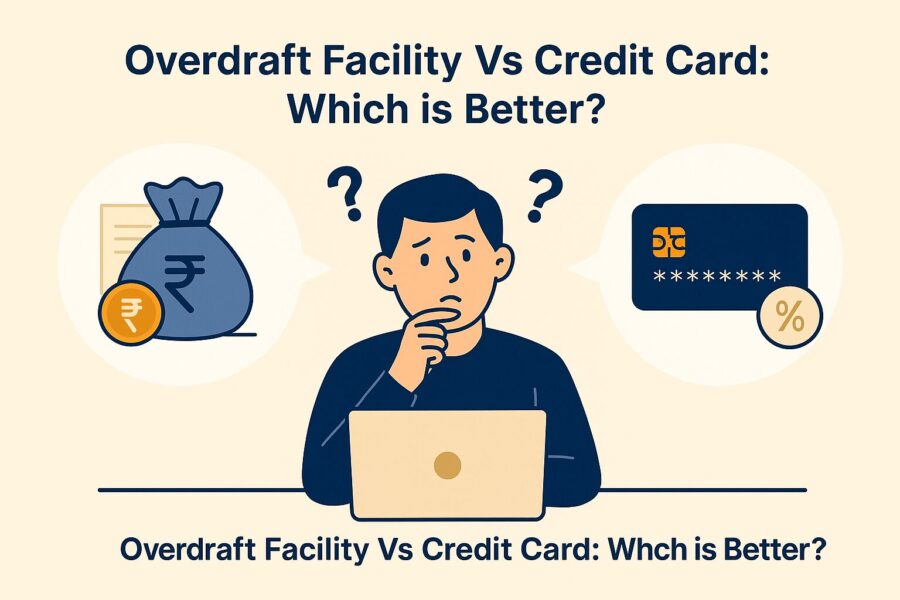
A bank overdraft usually has a short-term tenure of up to 1 year (short-term loan or short-term financing option). On the flip side, a credit card does not have a tenure. You will get a bill after every monthly billing cycle, wherein you need to pay the used amount.
However, an overdraft facility often has a higher interest rate compared to credit cards. A credit card attracts interest solely when you do not pay the outstanding bill amount within the due date, or you pay only the minimum amount.
Based on your financial needs, fund requirement horizon and spending type, you can choose between a credit card or an overdraft facility. Usually, you can use the funds from an overdraft facility as cash or an account transfer.
However, you can use a credit card for non-cash transactions. Using a credit card to withdraw cash attracts a cash advance fee, which is significantly high.
How Can an Overdraft Facility Help Your Business?
Several banks offer overdraft facilities against security deposits in bank accounts, property, insurance policies, fixed deposits, equity and salary. They provide overdrafts to self-employed or salaried individuals in addition to business owners. As a result, businesses can seamlessly apply for overdrafts to fund working capital.
Businesses often use an overdraft facility to fund their low cash reserves and bridge cash flow gaps. Usually, the interest rate on an overdraft facility is lower than the interest rates on loans (personal loans and business loans) interest rates. If you have a small business, you can take an overdraft facility to fund sudden expenses for business purposes.
Conclusion
One of the main differences between overdraft facility vs credit card is in the interest rate. An overdraft facility usually attracts a higher interest rate compared to credit cards. Further, you do not need to pay any interest on your credit card if you pay the entire bill amount within the due date (repayment terms and repayment schedule).
You can choose between an overdraft facility vs credit card based on your financial needs. If you need cash for your business, you can choose an overdraft. On the flip side, if you need to transact using PoS, you can choose credit cards.
 By
By 






